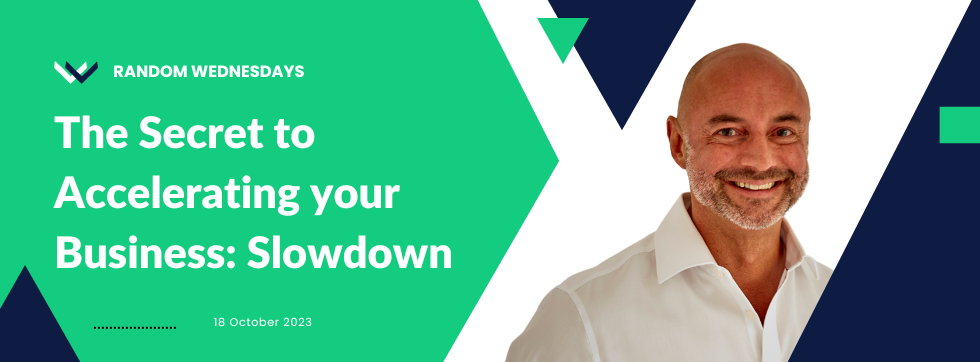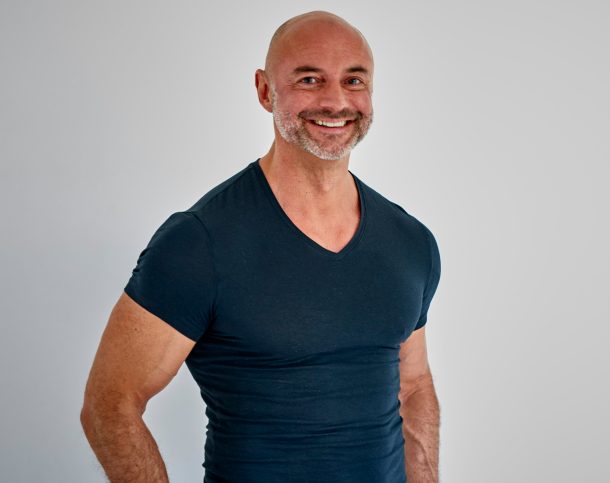Want to fast track a thriving coaching business with high fee clients?
Welcome to the “slow movement.”
A mindset of “slow is smooth, smooth is fast.”
It means doing everything at the right speed, instead of striving to do things faster.
It’s counterintuitive, the faster you want to go, the more you need to slow down.
The antidote to burnout. Where slowing down can be your fastest route to success.
I see too many coaches trapped on the hamster wheel. Frantically spinning, always hustling.
Rather than slamming the brakes on and focusing on doing things better.
So today, I invite you to slow down.
Do less and prioritise. Celebrate quality over quantity.
Spending the right amount of time on the things that matter most.
Let’s explore why.
3 spaces to slow down
There are three critical areas for coaches to master.
- Connecting
- Creating clients
- Coaching clients
1. Connecting with people
The best conversations always start with curiosity and end with possibility.
With that in mind, talk less and listen more.
Create space for people to share their stories, their vulnerabilities, their truths.
Rushing in to tell, solve, provide advice or worse coach is the highway to nowhere.
Stop.
Listen for interesting insights.
At some point down the line, you might find an opportunity to serve. Maybe you won’t.
The art of connecting is to build a relationship without agenda, one conversation at a time.
Connecting with one person daily might appear to be a snails pace.
But in 30 days, you’ll have curiously connected with 30 people.
Be the tortoise, not the hare. Slow and steady wins the race.
2. Creating clients
Now you’ve got someone who’s interested in your coaching and working with you.
They may even have given you a verbal agreement.
The fastest way to lose them is to get attached to the outcome. Excitedly jumping to the “close” without respecting the process.
Slow down.
It’s not a sprint or a marathon but a matter of commitment.
Test the yes.
- On a scale of 1 to 10 (10 being totally committed) – how committed are you?
- What if anything might get in the way?
- How will you overcome that?
- What conversations if any, (or with others) do you still need to have?
If for any reason it’s not a ‘hell yeah’ – it’s a no from me.
Slow down and test your prospective client’s commitment.
It encourages self awareness.
Making a more conscious, purposeful decision to invest in themselves.
Ultimately, that creates a deeper, richer client relationship.
3. Coaching clients
Marshall Goldsmith (the Godfather of executive leadership) once asked Michael Bungay Stanier (Best selling author and coach) what his favourite question was.
His reply, “It’s three words. Just three words. The acronym for the three words is A W E, so it’s literally an awesome question. The question is this: “And what else?”
Michael explains it’s so powerful for two reasons:
- The first answer somebody gives you is almost never their only answer and it’s rarely their best answer.
- It’s a self management tool to keep your advice monster quiet, to stay curious a little longer and see where the conversation leads.
The reason I love asking this question too is because it helps to create space to pause.
For my clients to feel safe and open up, be vulnerable, and tackle deeply-rooted challenges.
Instead of ploughing ahead in the conversation, it’s an intention to dig deeper.
“And what else…” can be gently asked (like the 5 Why’s) many times until all possibilities are exhausted.
By slowing down you become more present in the moment.
Signalling to your client you’re genuinely invested in them and their challenges.
Conclusion
Creating a thriving coaching business isn’t about hustle and speed.
It’s about depth of connection, quality of commitment and authentic engagement.
The “slow movement” isn’t about inactivity; it’s about intentional action.
The faster you embrace the power of patience, the sooner your business will take off.
Remember, in a world obsessed with speed, the real magic lies in the pauses.
Slow down to speed up.
Let your business acceleration truly begin.
Key Action Step
Create the Slow Hour.
- Set aside one hour each week, dubbed the “Slow Hour.”
- Review your past week’s interactions.
- Ask yourself: “Where could I have slowed down to connect deeper, test commitment, or ask ‘And what else?’
- Journal insights and create specific intentions for the week ahead.
- Apply the ‘slow movement’ principles in real-time with your clients.
- This act of intentional reflection will anchor the slow approach into your coaching practices.


